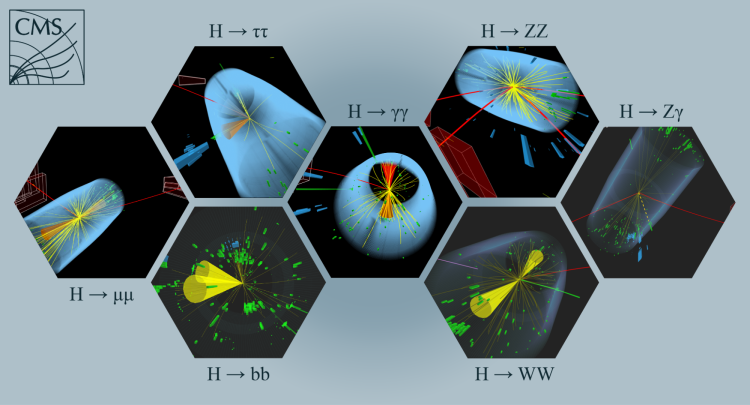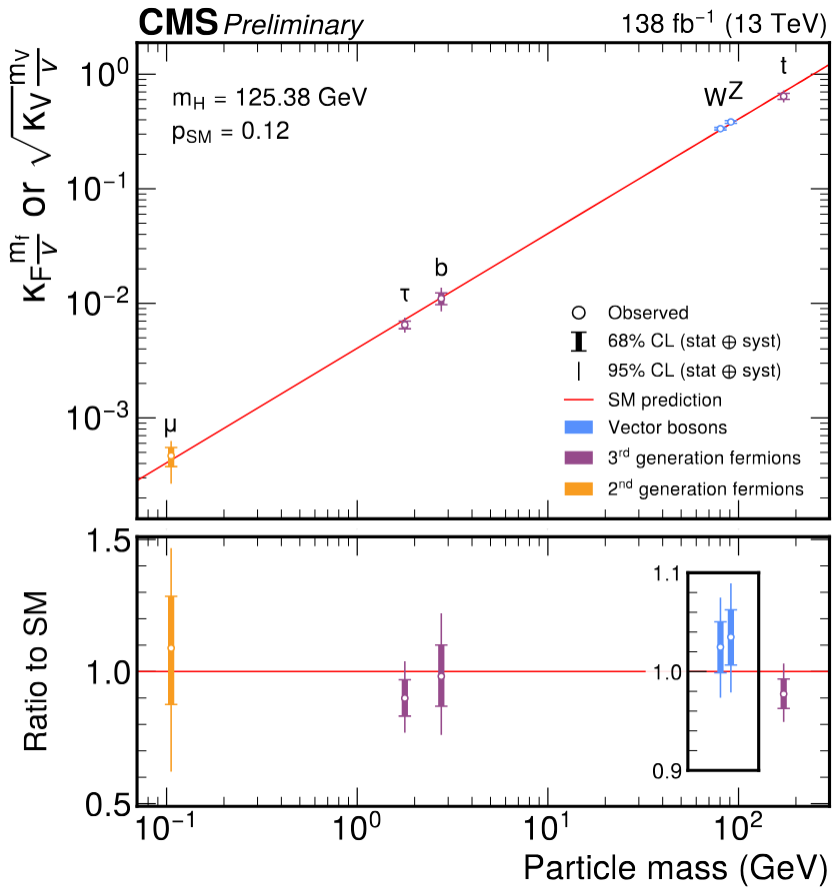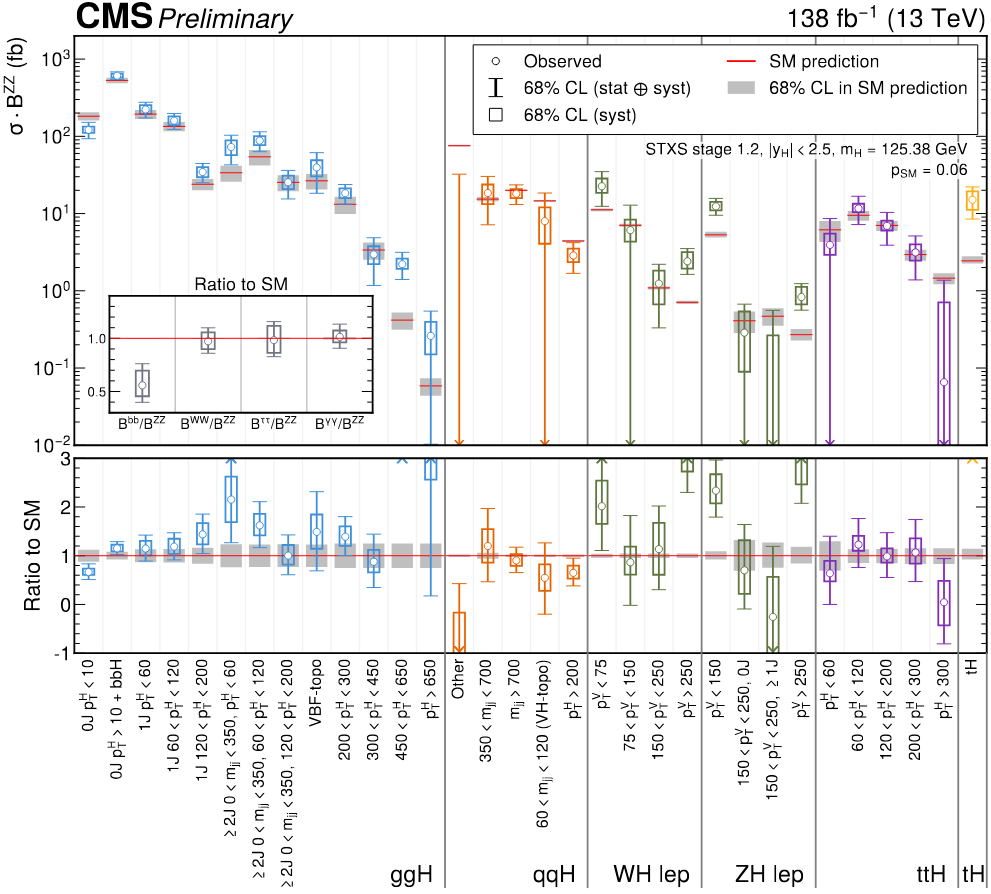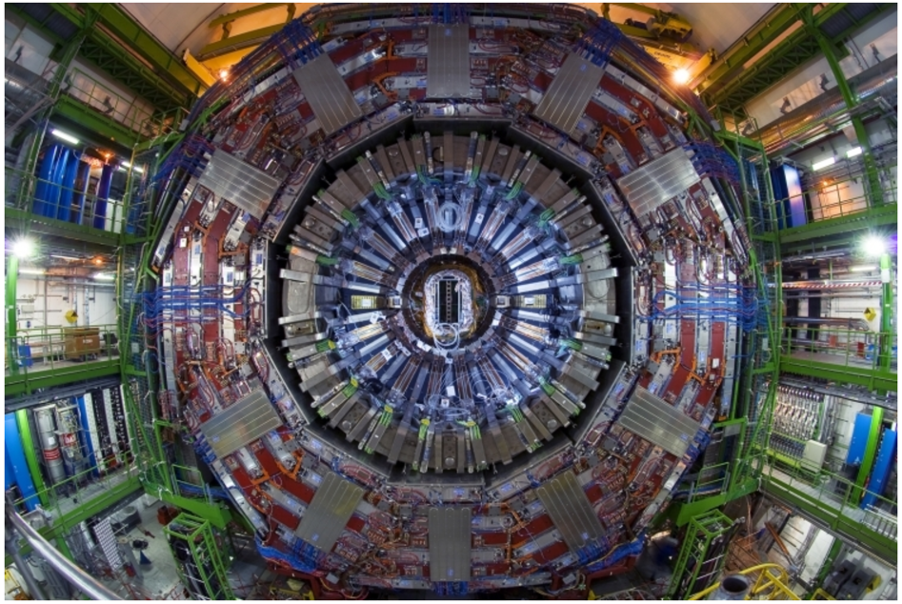
In a much anticipated result, the CMS experiment presents the legacy combination of Higgs boson studies using the full LHC Run 2 data, recorded between 2016 and 2018 – the result is the most precise and comprehensive measurement of the Higgs boson by CMS to date.
Discovery of the Higgs boson in 2012 by the CMS and ATLAS experiments marks a major breakthrough in our understanding of the Universe. Now, after 13 years, a combination of Higgs boson measurements represents a key milestone on our journey to uncover the deeper workings of nature. “It is amazing to see how far we have come in just over a decade since discovery,” says Dr Jonathon Langford from Imperial College London, a lead analyst working on the result. “We are now able to measure the Higgs boson production rate at the LHC with a 5% precision, confirming our theories regarding the origin of mass in the Universe.”
But the story doesn’t stop here — thanks to the immense volume of data collected by the CMS experiment, we are able to study the Higgs boson in ever greater detail. The results presented here are based on a statistical combination of measurements from all Higgs boson decay channels which are currently experimentally accessible: a Higgs boson decaying to pairs of photons, vector bosons (W and Z bosons), tau leptons, bottom quarks, muons, and a Z boson and photon — illustrated in the event displays at the top of this article. In each decay channel, several Higgs boson production modes are measured.
Combining all these measurements is not a simple task: it requires a highly complex fit to vast amounts of CMS data… but the payoff is substantial. The figure below shows how strongly the Higgs boson couples to different types of particles — the W and Z vector bosons, the top and bottom quarks, the tau lepton, and even the lighter muon. The measured coupling strengths are presented as a function of the particle mass, demonstrating a relationship exactly as predicted by the standard model (SM). With the achieved levels of precision, this agreement is shown to hold across several orders of magnitude, providing a striking confirmation of the theory.

Above: The measured coupling modifiers of the Higgs boson to different particles. The bottom panel shows the ratio of the measurements to the SM predictions, which shows both excellent agreement and extremely high precision.
The large amount of data enables us to go a step further and study Higgs boson production with an increased granularity. We perform these so-called “differential” measurements in a framework known as Simplified Template Cross Sections (STXS). In this framework, Higgs boson production is broken down into distinct categories, based not just on how the Higgs boson is produced, but also on its kinematic properties, like its momentum. By measuring how often the Higgs boson is produced in each of these categories, we are able to build a detailed map of its behaviour and pinpoint areas that might be especially sensitive to new physics. The result, which is in agreement with the SM, is the first ever combined STXS measurement from CMS, simultaneously measuring 32 different categories of Higgs boson production.

Above: Rates of production (cross section) in the 32 STXS categories of the Higgs boson. Many different production modes and kinematic regions are probed, with SM predictions (shown in red) varying across four orders of magnitude. The bottom panel plots the ratio of the measurements to the SM predictions.
To explore what might lie beyond the SM, we interpret the above measurements using a powerful tool known as Standard Model Effective Field Theory (SMEFT). This allows us to search for new physics in a model-independent way — treating the SM as a low-energy approximation of something deeper and more fundamental that we can’t yet directly observe. In this interpretation, we test for a wide range of possible new physics by including up to 43 different SMEFT interactions. Precise constraints are derived on parameters characterising these interactions — most parameters show good agreement with the SM, although a few small but interesting deviations emerge. Dr Aliya Nigamova from DESY, another lead analyst for the result, describes them this way: “It is exciting to see a few deviations in these very interesting high-momentum regions. At this point, they could be either statistical deviations or first signs of beyond-the-standard-model physics. It will be interesting to follow up with more data and better analysis techniques.”
In summary, this new result is the most comprehensive study of Higgs boson production and decay performed by the CMS experiment to date. It is the culmination of many years of successful LHC data taking and rigorous data analysis. By combining Higgs boson measurements based on the LHC Run 2 data we are able to reach an unprecedented level of precision. These measurements provide a stringent test of the SM, confirming its robustness across a wide range of observables, while also leaving room for continued exploration of the Higgs sector. As the LHC continues to produce more data, we eagerly look forward to seeing how these measurements evolve, and reveal even more about the fundamental workings of the universe.
Written by: Jonathon Langford, for the CMS Collaboration
Edited by: Muhammad Ansar Iqbal
Read more about these results:
-
CMS Physics Analysis Summary (HIG-21-018): "Combined measurements and interpretations of Higgs boson production and decay at √s = 13 TeV"
-
@CMSExperiment on social media: Bluesky - Facebook - Instagram - LinkedIn - TikTok - Twitter/X - YouTube

